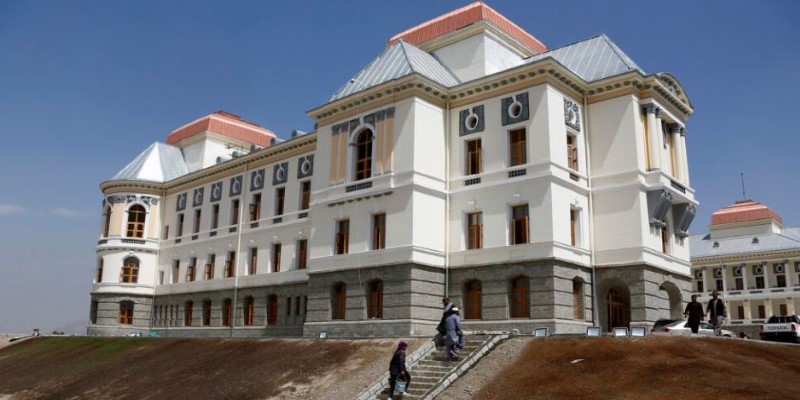Nestled amidst the rugged terrain of Afghanistan, Kabul’s Ruined Palace stands as both a haunting reminder of past glories and a solemn witness to decades of upheaval. This once-majestic structure, known to many as the Darul Aman Palace, is more than just crumbling walls and faded grandeur—it’s a testament to the resilience and spirit of the Afghan people.
Each stone of the palace holds a tale of ambition, conflict, and survival, and this palace is the symbol of a nation that has weathered all storms of history. We can't help but feel the weight of its significance while walking through its hollowed halls- a monument caught between the splendor of its beginnings and the scars of modern struggles.
The Grand Vision Behind Darul Aman
Kabul’s Ruined Palace, known as Darul Aman, was conceived in the early 20th century as part of a bold vision to modernize Afghanistan. King Amanullah Khan, who ascended the throne in 1919, sought to steer his country toward modernization and reform. Inspired by European neoclassical architecture, he envisioned a palace that would not only serve as the seat of the government but also symbolize a new era for Afghanistan. With its grand halls, columns, and ornate details, the palace was a departure from traditional Afghan architectural styles, reflecting a desire to adopt Western ideals while preserving Afghan identity.
The palace started its construction phase during the 1920s and stood on top of a hill overlooking the city of Kabul. Thus, both strategically and symbolically, the site meant something great. The hub was supposed to be where Afghanistan would look to have progressed, but it would ultimately show challenges as mirrored by King Amanullah Khan's era. His ambitious reforms faced tremendous domestic opposition, and external forces ranging from political turmoil at home to foreign opposition pushed him to abdicate the throne in 1929. The palace, meant as a symbol of New Afghanistan, remained unfinished, a true potential never realized to that extent. It represented a testament to the ambition of the creator but also testified against the political fragility that was prevalent at that point in time.
Decades of Conflict and Decline
The fate of Kabul’s Ruined Palace shifted dramatically as Afghanistan entered a period of intense conflict throughout the 20th century. What had once been a gleaming symbol of modernity soon became a victim of the nation’s violent turmoil. Following King Amanullah Khan’s abdication, the palace remained abandoned for decades. It fell prey to the forces of war and political instability that ravaged Afghanistan, its grandeur fading as successive regimes sought to impose their control.

During the Soviet-Afghan War of the 1980s, the Darul Aman Palace was repurposed as a military base, marking a stark contrast to its original role as a symbol of peace and progress. The palace became a battleground, with bombs and artillery shells leaving deep scars across its structure. The civil war of the 1990s further worsened the situation, reducing much of the palace to rubble. Its once imposing facade, which had symbolized the dreams of a prosperous nation, was now pockmarked with bullet holes and damaged by artillery strikes.
Walking through the palace today, remnants of its former splendor remain despite the years of destruction. The high ceilings, although crumbling, evoke the luxury of its past, while the corridors, littered with rubble, seem to whisper tales of Afghanistan's long history of conflict. The ruins now stand as both a physical and symbolic reflection of the resilience of the Afghan people.
The Palace in the Modern Era
Though the palace is still a shadow of its former self, its presence in modern Kabul is undeniable. For the people of Afghanistan, the Ruined Palace has become a symbol of both nostalgia and hope. The urban landscape around it has grown rapidly, with new buildings and developments transforming the city. Yet, the palace remains a reminder of Kabul's earlier grandeur and the potential for a brighter future.
In recent years, the structure has taken on a new role. As a cultural site, it has hosted exhibitions and events, offering both locals and visitors a chance to connect with Afghan history. It’s a space where the past and present intersect, where people come to remember the trials their country has faced and the resilience it continues to show.
A Symbol of Resilience and Renewal
Despite its state of disrepair, Kabul’s Ruined Palace has remained a powerful symbol for the Afghan people. Its survival through decades of war is a testament to the enduring spirit of the nation. In recent years, efforts to restore the palace have brought renewed hope.

The restoration project, completed in 2019, aimed not only to rebuild the structure but also to rekindle a sense of national pride. Under the leadership of Afghan architects and engineers, the palace was carefully restored, respecting its historical significance while giving it a modern purpose. Today, it stands as a cultural and historical site, hosting events and serving as a reminder of what Afghanistan can achieve despite adversity.
Yet, the palace’s story is far from over. Its very existence prompts questions about the balance between preserving history and embracing change. For many Afghans, the Darul Aman Palace represents the resilience of their culture and identity, a beacon of hope even amidst uncertainty.
Conclusion
Kabul’s Ruined Palace stands as a powerful symbol of Afghanistan’s rich history and enduring resilience. From its ambitious beginnings to its devastating decline, it reflects the country’s struggles and triumphs. The palace’s restoration in recent years offers hope for a brighter future, reminding the Afghan people of their heritage and strength. As it continues to stand amidst Kabul’s ever-changing landscape, the Darul Aman Palace remains a poignant reminder of the past, offering both reflection and inspiration for generations to come. Its story is far from over, and its resilience mirrors the spirit of the Afghan people.











